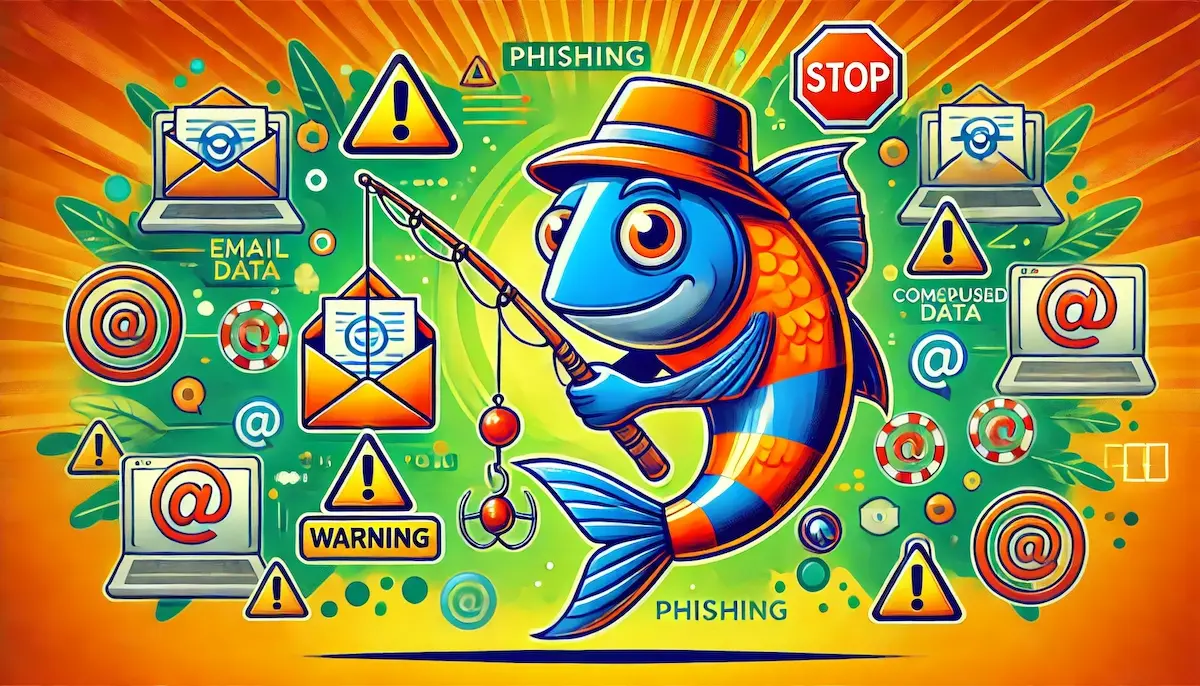Phishing is a type of cyberattack where attackers attempt to deceive individuals into providing sensitive information such as usernames, passwords, credit card numbers, or other personal data. This is typically done by masquerading as a trustworthy entity in electronic communications. Phishing attacks are widespread and can have severe consequences for both individuals and organizations.
What is Phishing?
Definition
Phishing is a form of social engineering attack designed to trick victims into divulging confidential information by pretending to be a legitimate or trusted source. The attackers often use email, social media, phone calls, or text messages to carry out their schemes.
How It Works
- Preparation: Attackers gather information about their targets to make their phishing attempts more convincing. This may include personal details, contacts, and professional roles.
- Execution: The attacker sends a fraudulent message designed to look like it comes from a trusted source. This message often contains a sense of urgency or a call to action, such as a request to reset a password or verify account details.
- Exploitation: The victim is tricked into clicking on a malicious link, downloading an attachment, or providing personal information, which the attacker then uses to gain unauthorized access or commit fraud.
Types of Phishing Attacks
Email Phishing
The most common form of phishing, email phishing involves sending deceptive emails that appear to come from legitimate organizations. These emails often contain links to fake websites or malicious attachments designed to steal information or install malware.
Spear Phishing
Spear phishing is a targeted phishing attack aimed at a specific individual or organization. The attacker customizes the message based on detailed information about the target, making it more convincing and harder to detect.
Whaling
Whaling targets high-profile individuals such as executives or senior managers within an organization. These attacks often involve more sophisticated techniques and higher stakes, aiming to steal sensitive corporate information or large sums of money.
Vishing (Voice Phishing)
Vishing involves using phone calls to trick individuals into providing personal information. Attackers may impersonate customer service representatives, technical support, or other trusted figures to persuade victims to reveal confidential details.
Smishing (SMS Phishing)
Smishing uses text messages to deliver phishing attempts. The messages often contain links to malicious websites or phone numbers that connect to fraudulent call centers.
Clone Phishing
In clone phishing, attackers create a nearly identical copy of a legitimate message previously sent to the victim. The cloned message may contain malicious links or attachments, tricking the victim into believing it is a genuine follow-up.
Recognizing Phishing Attempts
Red Flags
- Unexpected Requests: Be cautious of unsolicited requests for personal or financial information, especially if they come with a sense of urgency.
- Suspicious Links: Hover over links to see the actual URL before clicking. Look for discrepancies or misspellings in the web address.
- Generic Greetings: Phishing emails often use generic greetings like “Dear Customer” instead of your name.
- Spelling and Grammar Errors: Poor spelling and grammar can be a sign of a phishing attempt.
- Unusual Attachments: Be wary of unexpected attachments, particularly if they come from unknown senders.
Verification Steps
- Contact the Source: If you receive a suspicious message, contact the purported sender directly using a known, legitimate contact method to verify its authenticity.
- Check URLs: Ensure the website’s URL is correct and uses HTTPS. Avoid clicking on links in suspicious messages.
- Use Multi-Factor Authentication (MFA): Enable MFA on your accounts to add an extra layer of security, making it harder for attackers to gain access even if they obtain your credentials.
Preventing Phishing Attacks
Security Awareness Training
Regular training for employees and individuals on how to recognize and respond to phishing attempts is crucial. This includes simulated phishing exercises to test and improve awareness.
Email Filtering
Implementing robust email filtering solutions can help detect and block phishing emails before they reach users’ inboxes. Advanced filters can identify and quarantine suspicious messages based on various criteria.
Anti-Phishing Tools
Use anti-phishing tools and browser extensions that can detect and warn users about malicious websites and phishing attempts. These tools often integrate with email clients and web browsers to provide real-time protection.
Strong Password Policies
Encourage the use of strong, unique passwords for different accounts. Password managers can help users generate and store complex passwords securely.
Regular Software Updates
Keep software and systems up to date with the latest security patches to protect against vulnerabilities that phishing attacks might exploit.
Responding to a Phishing Attack
Immediate Actions
- Do Not Respond: If you suspect a phishing attempt, do not reply to the message or provide any information.
- Report the Attack: Report phishing attempts to your IT department, email provider, or relevant authorities. Many organizations have dedicated channels for reporting such incidents.
- Disconnect: If you clicked on a malicious link or downloaded an attachment, disconnect your device from the internet to prevent further damage.
Remediation Steps
- Change Passwords: If you provided login credentials, change your passwords immediately. Ensure that the new passwords are strong and unique.
- Scan for Malware: Run a comprehensive malware scan on your device to detect and remove any malicious software.
- Monitor Accounts: Monitor your financial and online accounts for any unusual activity. Report any unauthorized transactions or changes to your bank or service provider.
Conclusion
Phishing remains one of the most prevalent and dangerous forms of cyberattack, posing significant risks to individuals and organizations. By understanding the various types of phishing attacks, recognizing the warning signs, and implementing robust preventive measures, you can protect yourself and your organization from falling victim to these deceptive schemes. Staying vigilant and informed is key to maintaining a strong defense against phishing.
Blockfine thanks you for reading and hopes you found this article helpful.
